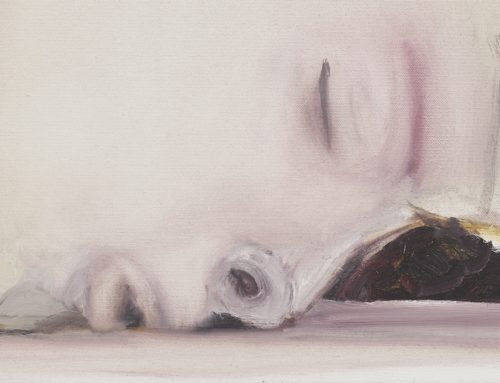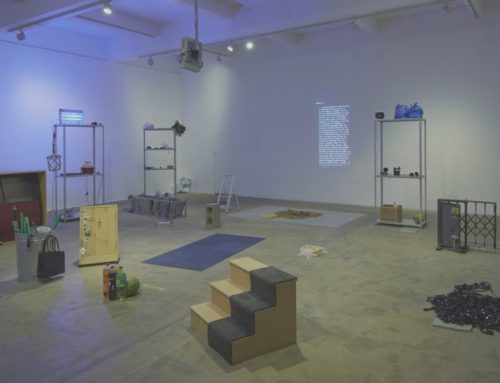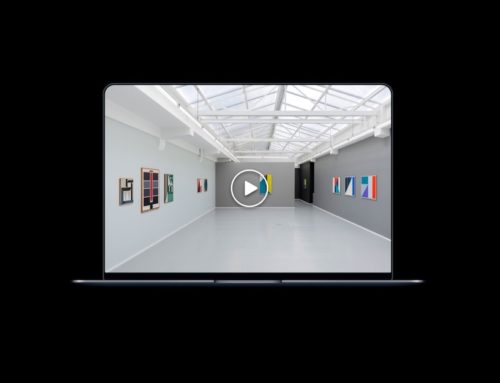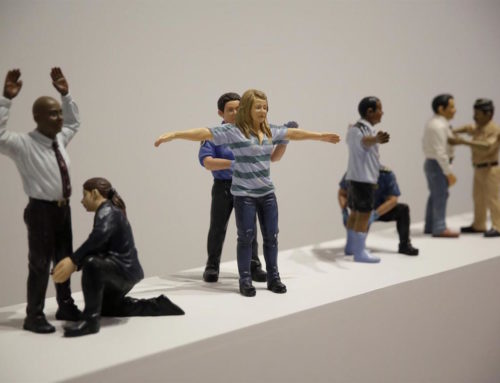James Coleman is one of Ireland’s greatest artists. He has achieved international acclaim, having exhibited extensively since the 1970s. According to Krauss, Coleman’s work belongs to a ‘post-medium age’, a period where the traditional media of painting and sculpture were rejected in favour of alternative modes of expression. One only needs to think of Donald Judd’s “Specific Objects’, promoting the new ‘three-dimensional works”, liberating artists from the limitations of being confined to a rectangular canvas of painting, and extending their work into the viewers’ realm of vision.
What led to artists rejecting painting and sculpture? How did this pressure on artists to invent a medium come about? The 1960s saw the rise of Conceptual art, Minimalism, and new modes of expression. Sol Le Witt wrote in his famous Sentences on Conceptual Art “Ideas can be works of art; they are in a chain of development that may eventually find some form. All ideas need not be made physical.” This period saw the rise of the artist as art critic, the rejection of painting or sculpture for instead a new form of art where the hand of the artist was no longer central to the work, something which had been central to art up until Abstract Expressionism. Minimalism centred around forms related to human scale, which draw the viewer’s attention to how we interact with these works and the spaces in which they were exhibited. As art became more interdisciplinary, merging with theatre, film, and dance the realm of possibilities expanded and the role of an artist was broader than ever before!
I first came into contact with the work of James Coleman while studying History of Art at University College Dublin. I wrote my MA dissertation on the 1972 Irish Exhibition of Living Art. This exhibition is radical for its advancements in Conceptual art, showing Sound art, Video art and Performance art for the first time in Ireland. James Coleman’s sound installation Stereo Piece, was one of the most advanced art works of IELA 1972. Stereo Piece was situated in an entirely empty white room with two concealed speakers emitting sound from opposite ends of an empty white room. Their alternations create a conversation that the spectator is challenged to assimilate into when drawn backwards and forwards across the room as in response to competing voices. This work draws the viewer’s attention to the exhibition space and their presence in relation to the artwork, making it conceptually advanced.
Lapsus Exposure (1992-94) is part of a loose trilogy with two other works, Background (1992-93) and I N I T I A L S (1994). It is a 12 minute long slide projection which is set in a recording studio. A post-punk group has met to record a new album and take a group photo for the cover. One member of the group, Vos, did not show up which creates tension within the group. The recording studio has been prepared for a photoshoot, with photography equipment visible in the opening scene. Throughout the projection, many angles of the room are seen, including the backstage area. The camerawork is a vital component of the installation and used just as purposefully as the actors who can be seen and heard as they move through the space. Lapsus Exposure explores the relationship between presence and absence, throughout the projection there is a consistent feeling of a void. Coleman’s work challenges linear structure through its style of narration. His slide projections are conceived as a continuous cycle, the viewer may enter and leave this projection at any point. The work continues as an endless loop. As people enter and leave Coleman’s installation, this directly reflects the projection itself, as characters enter and leave the set.
Coleman along with many other Conceptual artists faced the challenge of having to adopt an alternative mode of expression. Coleman’s slide installation consists of slides for its visual element and a CD-R for its audio channel. This slide and tape format has no creative history. This was a format used for education and business rather than art. Coleman’s slide projections are typically displayed in a dark room, images are shown on a large screen from a projector situated in the centre of the room. The projector creates a distinctive click which forms an integral part of his slide projections. Sound is emitted by speakers throughout the space. These spaces do not have seating, which is unusual and often leaves the viewer unsure of where to stand, drawing the viewers’ attention to the space.
The relationship between the slides projected, the voice heard through the speakers and the click of the shutter consume the viewers’ attention as they seek unity between the components of the piece. The click of the shutter is what unifies Coleman’s work, as actors appear and disappear through Lapsus Exposure, the click remains consistent. The viewer becomes hyper aware of their presence in relation to the work, a feature so central to Minimalism.
Evidence of Coleman’s artistic hand is not typically seen in his work. The old-style projectors used were not manufactured by him, the voice overs he chooses are not read by him, the video stills appear quite sterile and if shown in isolation would provide a very different experience. This idea of inventing a medium is what makes his work so Conceptually advanced as his work can only be truly experienced in its entirety, once dismantled the work does not exist, looking at photographic stills in books does not translate, nor would watching the piece on a laptop screen, these works must be experienced in situ.
Irish authors have consistently reflected on the lack of familiarity with Coleman’s work in Ireland. An exhibition sheet on James Coleman’s work at the Douglas Hyde gallery in 1982 commented on Coleman’s international acclaim yet being relatively unknown in Ireland.[1] In 1998 Paula Murphy writing in the Irish Arts Review commented on the lack of progression since 1982, urging the next generation of Irish exhibition viewers and Irish artists to experience and assess the work of James Coleman. In 2020 not much has changed, Coleman still remains relatively unknown, perhaps this is due to Coleman working abroad for many years or due to Coleman’s relatively low profile maintained throughout the years.
Coleman is one of Ireland’s most talented living artists, this is due to his singular medium, creating a unique art form. As Coleman was not alone creating his own medium, his work is typically discussed in relation to other invented media, rather than comparing to works similar to his own, celebrating its uniqueness. Coleman’s work deserves to be brought into the public eye once again and celebrated.
‘Presence and absence in James Coleman’s Lapsus Exposure’ is an article written by Rachel Owens. You can find out more about Rachel on her website.





